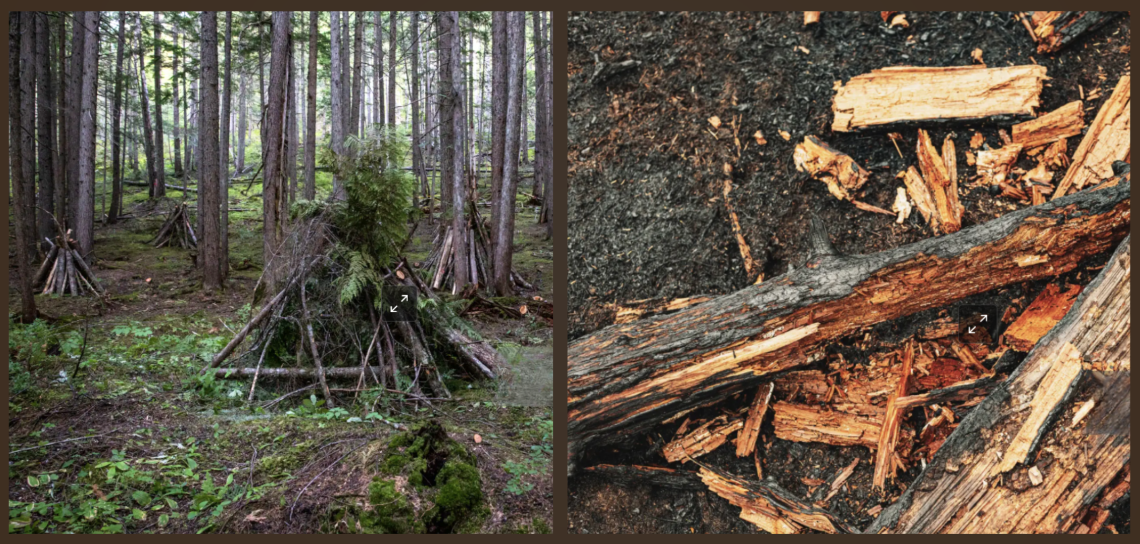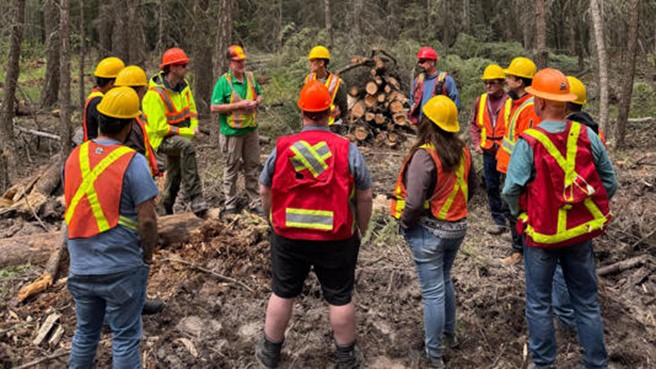Collecting forest debris could both power remote communities and help protect them from wildfires
“It’s a win-win situation. Communities can use local biomass as a feedstock to manage their own energy supply, lower costs and reduce wildfire risk.”

Collected forest debris can be used as an alternative to diesel fuel. (Photos: Getty)
Canada has about 276 remote and northern communities that aren’t connected to the North American electrical grid and natural gas distribution pipeline systems. These communities are home to approximately 200,000 people — predominantly Indigenous — and they rely heavily on off-grid diesel fuel to meet their power needs. These same communities are also disproportionately impacted by wildfires.
The seven-second summary:
To address both energy and wildfire challenges, researcher Nicolas Mansuy and his team used remote sensing and community-based information to assess 33 communities identified as vulnerable to forest fires. Their assessment found that 30 of the communities could meet their energy needs by turning less than one percent of the surrounding biomass classified at high risk from fire — such as fallen trees and branches — into bioenergy.
This approach would both help protect their communities from the growing threat of wildfires while also completely replacing their reliance on fossil fuels. This new study offers an inspiring vision for addressing wildfire risks and advancing sustainable energy solutions in some of Canada’s most vulnerable communities.

Nicolas Mansuy explaining the potential role of bioenergy using biomass from fuel treatment. (Photo: Mustapha Onder Ersin, University of British Columbia)
Reducing wildfire risk:
- Wildfire is an increasing threat and a costly hazard to human beings, carbon sinks, natural resources and infrastructure.
- Although Indigenous Peoples make up only five percent of Canada’s population, 42 percent of wildfire evacuations during Canada’s record-breaking wildfire year in 2023 occurred in Indigenous communities, as approximately 80 percent of them are located in fire-prone forested areas.
- While there are several cost-effective solutions to mitigate fire risk — strengthened forest management, prescribed burning practices and following FireSmart Canada community guidelines to thin, prune and convert vegetation into low-flammability trees and shrubs — the leftover biomass is usually discarded as a waste product through piling, burning on-site or taking off-site for disposal.
Improving energy security:
- Helping remote and northern Canadian communities to transition away from diesel reliance and toward clean energy solutions is integral to the national fight against climate change.
- In these communities, diesel-based systems generate up to 10 tonnes of CO₂ equivalent per person per year, which is more than twice the Canadian average of 4.1 tonnes per person for electricity generation and residential heating.
- Diesel also has high operating costs and is expensive to purchase, particularly for residents in Nunavut, who have some of the highest energy costs in Canada.
- Bioenergy is renewable energy derived from the combustion of organic and forest biomass, consisting primarily of solid biofuels, such as wood chips and pellets.
In closing:
“We discovered that by harvesting less than one percent of their surrounding forest biomass, most of these communities could completely replace their annual fossil fuel needs,” emphasizes Nicolas. “This could be a powerful way to deliver real clean energy benefits.”
If you’re a member of the media or an educator and you would like to learn more about this research, contact us at: sciencecommunications-communicationsscientifiques@nrcan-rncan.gc.ca.